
As is the glass; So is the vision
Puttaparthi, Sai Kulwanth Hall (Gurupoornima )
Description
If you wear black colored glasses on your eyes, the whole world appears black. If you put on red glasses everything will appear red to you. So wear the glasses of love so that everything will be love filled. If the glasses are one sort and eyes are of other sort you will land up in trouble. Then glasses stand as an obstacle. Here is Anil kumar. He has worn glasses. Glasses, though they are as obstacles but it helps in his vision. So you should put on glasses that help your vision. What is that vision? The vision of love. You should have a divine feeling. But if you wear the wrong glasses you will lose existing sight. There is no greater path than love. Its because of the love, you develop other virtues like compassion, tolerance and forbearance.
Topics
-Philosophical concepts
-

I will explain Vedanta extensively to you all
00:01:00Bhagawan has started Vedanta in a simple way today. Every word and mantra in it has got immense meaning. Vedantam is very easy to understand. Bhagawan will explain every word in detail so as to make every one understand it. Ultimately the entire essence of Vedanta would not even be an inch long but within it there are about fifteen thousand mantras. Bhagawan says that He would show it. This explanation can be given only by God himself and not possible by others.
-

What is Amanaskamu in Vedanta
00:01:52Next is the ‘Amanaskamu’. What is the meaning of ‘Amanaskam’? The thing that is seen with the help of the five elements, the entire physical world, is the manifestation of the inner vision. The entire existence is nothing but the Brahman for there exists none other than that, “yekam yeva adviteeyam Brahma”, there is only one, the magnificent Brahma. The entire creation is Brahma. There is no second entity. In that scenario, the mind that thinks, too, does not exist. The vastness of the creation is visible only when there are thoughts and counter thoughts. Without the vastness when everything exists as single entity, the mind ceases to exist. Whatever one sees is Brahman, whatever one listens is Brahman, whatever one thinks is Brahman, whatever one utters is Brahman, and whatever one does is Brahman and wherever one walks is Brahman. Therefore when everything is Brahman, there is no mind. The thoughts and counter thoughts occur only when there is a second entity. Since there is no scope for thoughts, it is called as ‘Amanaskamu’, the state of retraction of mind. In that state love alone exists. That love is the truth. Truth and love are one and the same.
-
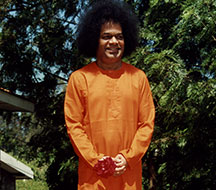
What is Sankhyamu in Vedanta
00:01:37The second one is ‘Sankhyamu’. It refers to the ‘panchendriya’, the five senses, ‘pancha prana’ the five life breaths, ‘Pancha bhoota’, the five elements , ‘Pancha Kosamu’ the five life sheaths, the mind, ‘Chittamu’- intellect, ‘Antahkarana’- conscience, jeevamu -the in-dweller- these twenty five aspects. Then one must properly investigate and research each aspect to know the real ‘I’. Investigation and enquiry must lead one to know that none of them is the real “I”. Believing that none of the aspects help in knowing the real principle of one self- the atma, one must realise that the principle of Atma is the sat-chit-ananda which is beyond enquiry and beyond the transcendental. Ultimately one realises that the sath-chit-ananda is atma and that one is atma, and realises the total identification of the “I” with the Atma. This is called as ‘Sankhya Yoga’. It involves a thorough enquiry of the inner as well as the outer senses.
-
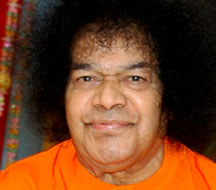
What is Tarakam in Vedanta
00:02:12What is meant by ‘Tarakam’? It is ‘Khechari’, ‘Vechari’, ‘Madhyama’ and the true essence ‘Bhagawati’. One must try to analyse the essence of these four aspects. What is the meaning of ‘Tarakam’? Many people have described it in many ways. There are five signs in this. One should know clearly the five signs, ‘Pancha Mudras’. One should know these five signs, research and investigate them properly, experience them, then determine the necessary and the unnecessary and brush aside the unnecessary; have a vision of Nadabindu and realise the ‘hamsatwa’, later on experience the state of sath-chit-ananda on earth—this sums up ‘Tarakam’. Immersing and concentrating the human mind in the principle of sath-chit-ananda, the ultimate bliss is called as ‘Tarakam’.
-
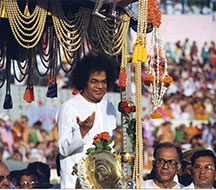
The purpose of Life is to know who you are
00:01:00Will a snake be killed by mere rubbing of its hood?” Will mere punishing the body, stop the sensual desires? Will giving up hunger and thirst result in the knowledge of Atma? Without self realization can one know the philosophical truth?! First and foremost one must know oneself for that is the very purpose of human life. “Who am I?” Am I the body? Am I the mind? Am I the intellect? Or Am I the inner sense?” No, it is ‘my’ body; I am different from my body. Therefore I am not the body. This body is a means; vesture likened to the clothes one wears. Hence one cannot claim that one is the body. One only punishes the body for the mistakes committed. But there is no fault in the body. All the fault lies with the mind.
-
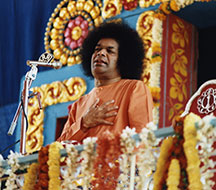
As is your feeling so is your vision
00:01:15God is never selfish. He is selfless. How can selfish people to know the selfless? One’s own thoughts reflect as one’s ideas about others. “Yad bhaavam tadbhavathi” as is the thought so is the manifestation. People imagine according to their own thoughts and feelings. Therefore the Upanishads too reiterated: “Munde munde matir bhinna”, different heads have different thoughts. It is not enough if one punishes the body, one should also punish the mind. ‘Putta paina mardhinchina paamu maranamonduna?’ Will a snake be killed by mere rubbing of its hood?” Tanuvunu taadandinchina vishayabhogammulu anuguna? Will mere punishing the body stop the sensual desires? Aakali dappulu veedinantha aatmagnyani taanaguna? Will giving up hunger and thirst result in knowledge of Atma? Taanevaro teliyakunna tatwa gnyaani yetlaguno? Without self realization can one know the philosophical truth?! First and foremost one must know oneself for that is the very purpose of human life.
-
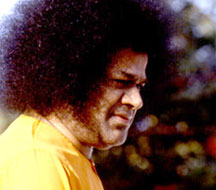
Swami explaining the role and workings of Pancha Koshas
00:03:38Man is made up of five different kosaas, sheaths viz—Annamaya, Praanamaya, manomaya, vignyaanamaya and anandamaya. Out of these five three are related to the physical world and two belong to the world beyond. It is not possible to differentiate between these two. The physical world and the world beyond are interlinked and closely bound. They are a perfect admixture. God is considered as the ‘sath, chith, ananda’ being. The sath, chith and ananda are part of one’s perception and feeling. The one that is to be experienced is the name and the form. Without the name and the form, sath, chith and ananda cannot be perceived by man. The name and the form belong to the physical world and are temporary and ephemeral. Through this medium of name and form which is transient and temporary, one can experience the everlasting sath chith and ananda. Therefore without the name and the form one cannot attain the everlasting and permanent purity that is sath, chith ananda. The body is the annamaya kosha. In the annamaya kosha, that is the body, the primary entity is the prana or the life force. This prana in turn is linked to the manomaya kosha. The totality of one’s existence on this earth consists the coming together of the three sheaths namely the annamaya, praanamaya and manomaya. To transcend from the human plane of existence to become one with divine one needs the vignyaanamaya and anandamaya koshas. Therefore two paths are shown one that pertains to the physical world and the other leading to the world beyond.
-

The words, mind, ego and the spirit belong to the same family
00:02:39Students!! The culture of Bharath is noblest and second to none. Man is sum total of his mind. Mind is the conglomeration of thoughts. Thoughts result in actions. Actions determine the joy and sorrow. Man’s behaviour is the cause for the joy and sorrow that he experiences. One’s behaviour is based on one’s thoughts. Mind is the collection of thoughts. Hence man is called as “Manishi”, human, as he originates from mind. Without mind man cannot be human. The one with mind is “Manishi”, human. Birds and animals do not have a mind. Therefore “Vaak”, word originates from the mind. The mind originated from ego and ego is a reflection of ‘Atma’, the soul. Hence the word, the mind, ego and the soul belong to the same family. Word, mind and ego together help man to attain Divinity. When there is harmonious relationship amidst all the three, then man attains divinity. When there is disharmony among these three it leads to restlessness.
-

Conscience, Conscious and Consciousness
00:04:38One should not follow one’s body or mind as ‘mind is like a mad monkey’ and ‘body is like a water bubble’, so one should not follow the body or the mind but should follow the conscience. From where does one get the ‘conscience’? The ‘conscience’ has come from the all pervading ‘consciousness’. This consciousness is called as the ‘Chaitanya’ or life force. And from this life force emanates the ‘witness’. This witness is the ‘conscience’. This conscience is also called as mind. Hence, the consciousness is ‘Atma’. Body is the conscious. So there are three aspects: Conscience, Conscious, and Consciousness. Conscious is the body, which is made up of the senses. Mind is associated with the witness. Atma is associated with the Chaitanya or the life force. Therefore, conscious is ‘the one you think you are’. ‘The one, others think you are’ is the conscience. Consciousness is ‘the one you really are’. The same thing is said in Arabic language, followed by Mohammedans, as: “I am in the light!” It implies, ‘I am dependent on others, I am bound by the light.’ After a little practice it was postulated as: “The Light is in me!” And ultimately Prophet Mohammed declared: “I am the Light!!” ‘I am in the Light’ refers to Conscious. ‘Light is in me’ refers to Conscience. ‘I am the Light!’ is Consciousness. The same thing appears in Christianity too! ‘I am the messenger of God!’ refers to the Conscious. The word ‘messenger’ implies that there exists a master who is different from and not related to the messenger. After some practice, it was changed to: “I am the son of God.” This indicates a relationship with the master and that is the relationship of father and the son. This is the one that others think you are. Next it was said, “I and my father are one!” and this refers to the consciousness which is the state of ‘I am the Light’. The ultimate state is that of the ‘Holy God’. In Vedantic parlance that ultimate state is referred to as the ‘Turiya’ state. Without understanding the underlying unity of and inner significance, people belonging to the various religions are at war with each other. There is no difference in the religions as all religions are good. All religions teach the same truth! Paths are different but the goal is the same. The truth is understood by broad minded people but the narrow minded ones misunderstand and fight with each other.
-

The attributes of wisdom - Sraddha, Rutham, Sathya and Yoga
00:07:39The first one is “Shraddha”. It has two meanings: ‘interest’ and ‘stability’. Shraddha is comprised of two aspects, namely ‘interest’ and ‘stability’. It is not enough if one has just ‘Shraddha’ or interest; one should have full faith in one’s interest. Therefore intellect has these two, namely the ‘interest’ and ‘stability’. The power of intellect is ‘Rutham’. What is its effect? It is the discrimination of good and bad under at all times that is the past, present and future, the three phases of time. The harmony of the thought, word and deed is called as ‘Rutham’. The word ‘Rutham’ is truly applicable only when there is purity in thought, word and deed. Hence the second aspect after ‘Shraddha’ is ‘Rutham’. Expressing the nature of ‘Rutham’ by way of word is called as ‘Sathyam’. ‘Sathyam’ or truth is that spoken word which comes from deep faith in the purity and unity of thought, word and deed. Merely uttering that, which is seen, heard or done, as it is, does not amount to truth or ‘Sathyam’; it only becomes a fact or ‘nizamu’. There is wide difference between truth and fact. There is a gulf of difference between intelligence and intellect; they are considered as same by people who do not know the difference between the two. Therefore truth is the expression of the nature of Rutham in word. The fourth aspect is ‘yoga’. What is ‘yoga’? There are many kinds of ‘yoga’ in the world today. According to Patanjali Yoga sutras yoga is defined as “yogaha chitta vruttinirodhakaha” meaning yoga is to have total control over one’s senses. Yoga means to have all the powers in a human under his control. Having total control is called as yoga. Exercising control over what one hears is yoga; control over smell is yoga; controlling one’s speech is yoga; control over one’s thoughts is yoga- therefore yoga is having control over the five senses. However one has to talk and cannot give up talking. But how should one talk? One must talk with purity and unity of thought, word and deed. One must not engage in arguments over untruth. Arguing about things unknown to oneself is ignorance. Arguments breeds hatred and disunity. Hence Vedas say, “Vaade vaade varjyathe vairam” meaning continuous argument gives scope to enmity. Therefore students should have full faith on the control over the senses. This age is very sacred, divine and a one that lays a royal path to bright future. It is the age where one builds the royal path to bright future. Today’s youngsters are the emancipators of this country. Sense control is the first and foremost lesson that the students should learn. Therefore, the combination of steadfastness, the Rutham, the truth and the yoga amounts to the mighty power. The divine manifestation is the mighty power. In that divinity, exists the Rutham; Sathyam, the truth, shines on this mighty power. Hence it is said that ‘truth is God’. Steadfastness is also divine for it is only through steadfastness that one can aspire to attain knowledge- “Shraddhavaan labhate gyanam”. Gyanam, wisdom, is God. It is said, “Sathyam gyanam anantham brahma!” meaning God is truth, God is wisdom, and God is without limits. Therefore truth is God; Rutham is God, Shraddha is God, Yoga is divine. God has so many names viz., “Yogeeshwara”, “siddhi sankalpa”, “sankalpa siddha”, and “yoga Yogeeshwara”. Of all the five aspects “buddhi” or intellect is the most important. The vedas reiterate this fact as “buddhi graahyam ateendriyam”. Intellect is transcendental, beyond the senses. Comparing such intellect with intelligence is not proper.
-

All the joy of the world is present in you, its your own property
00:01:51Nityanandam, paramasukhdam, Kevalam gnyaanamurtim, Dwandateetham, Gaganasadrusham, yogi hrudhyana gamyam, Nithyam, sathyam, vimalam, achalam, Sarvadheesaakshibhootam, Bhaavateetam, trigunarahitam, The eternal bliss, the giver of supreme bliss, Embodiment of wisdom, that which is beyond dualism, Ethereal, the goal of the meditation of seers, That which is permanent, which is the truth, That which is unsullied, which is immovable, That which is the eternal witness, which is beyond thoughts, That which is devoid of the three attributes... That is the permanent bliss, the bliss of yoga, the bliss of non-dualism and the bliss of atma. Such bliss of the self cannot be received from anybody for that is man’s nature and his very own. That is man’s own property. Disregarding his property man desires other’s property. No, man should not aspire for other’s property; one’s property is enough and sufficient for one and there is no shortfall. The whole world exists in man. In this context why should man want anything else from outside? Every world scenario has originated from oneself. One cannot see anything when one closes one’s eyes. Everything is visible when the eyes are open. Therefore where has the scenery outside come from?? It has manifested from within through the eyes.
-
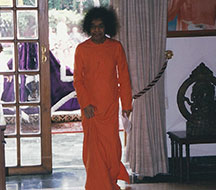
Three p's important for building good character
00:01:22Embodiments of Love!! In order to be successful in the field of spirituality, every man must develop the trinity of character. The first one is ‘pavitram’ purity, sanctity. The second one is ‘sahanam’, patience. And the third one is ‘pattudala’, perseverance. These three have been called as ‘pikara trayam’- the three ‘p’s. The first ‘P’ is “purity”. The second ‘P’ is “patience” and the third ‘P’ is “perseverance”. The man, who develops the three aspects of character, sanctifies and redeems his life.
-

Swami praise on CM and people of Karnataka
00:00:34The former Chief Minister of Karnataka, Mr. Patel has helped a lot. The present chief Minister, Mr. Krishnan, too is helping a lot. The people of Karnataka are also striving for this. It is Swami’s decision to make the people of Karnataka happy.
-

Nothing in this world is permanent
00:00:47The Vedas say, “Yad drusyam tanmasyam!” meaning all that which is being seen is sure to perish and vanish with time. Man sees different forms and names, the movable and immovable objects in the world through his physical eyes. All the things that one sees with physical eyes are bound to perish with time. Neither the one that sees nor the objects that are seen are permanent.
-

Sath, Chith and Ananda
00:01:51God is the embodiment of eternity and bliss. Among His many names the ‘Sath, Chith, Ananda’ is the noblest. ‘Sath’ means that which does not change in all the three phases of time. It coordinates all the countries, all the times and all circumstances. It is beyond time, space and individuals. That is the essence of ‘Sath”. “Chith” means wholesome and complete knowledge. This wholesome knowledge is the undercurrent of the various aspects of knowledge such as moral, physical, religious, spiritual and scientific. Therefore “chit” refers to the complete wisdom. Where “Sath” and “chit” exists there is “Ananda” the bliss.
-
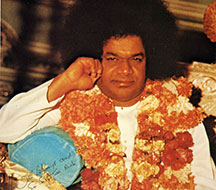
Become servant of servants
00:02:54Every human being should keep in mind the principles of adwaitha, enter into the society with principles of dwaitha or dualism and undertake service as devotion. It is divine to be called as a servant than being called a master. Actions done with feeling of ego become crooked but those done with feeling of atma become sanctified. Having started this journey from the ocean, one has to transform oneself into a servant and attain divinity through servitude. The great Sages of yore started their spiritual journey in servitude and attained divinity. In order to remove the ego one must strive to become the servant of the servant. So Gopanna also said, “Dasaanudaasudanu kaavalenu ra, Ne nee daasulaku sevane cheyavalera!” “Let me become the servant of servants! Let me have the privilege to serve your servants!!” “Aalubiddalu koodi velavelalayandu, “Let my wife and children, too serve them at all times!!” “Let my wife and children, too get the privilege to serve your servants at all times.” Then alone can one get rid of ego. This is the path of devotion, “Bhakthi Marga”.
-
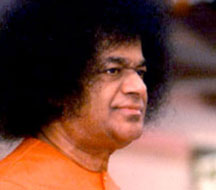
What is true Adwaitha
00:03:49Therefore, one must hold on to that which is the basis for everything. The root cause for everything cannot be understood by studying either the vedas, or the upanishads or the puranas or the geetha. All the scriptures are the basis for the external world. The external world is continuously promoting the duality concept. It develops the narrow minded feelings of ‘I’, ‘my’ and ‘mine’. When one realises the unifying principle that dwells in everything then that is truly the state of adwaitha. Sai organisations must follow the principle of adwaitha and serve all. The atma that dwells in all is one and the same. One may be named as Rama or Krishna or Madhusudhana or Sai, they are but names and do not depict the atma within. These are the names given to the perishable body. That entity which has neither birth nor death is represented by “I”. All the names are attributes of the physical body. The name that depicts or points to God is “Aham” meaning “I”. This “I” is common for everyone. A person named Rama replies “I” when asked “Who is Rama?” so also do the persons named Krishna or Narayana. The name and form of Rama, Krishna and Narayana may be different, but “I” is common for all. Hence “I” is everywhere. “I” is equal to “I”. “I am I.” These aspects must be developed today. It is because of lack of people propagating such adwaitha principles that life today is immersed in dualism and without such principles one’s spiritual practices are futile as they would not yield the desired goal.
-

Swami explains the workings of body, mind, intellect and atma
00:09:40Man must aspire to become broadminded living in this vast and wide world. Every human being has four states viz., the ‘body’, the ‘mind’, the ‘intellect’ and the fourth one is the ‘Atma’ or the soul. What is the essence and duty of this physical body? “Sareeramadhyam khalu dharma Sadhakam!”- meaning body is verily the instrument to carry out righteousness. How can this instrument discharge its duty or dharma? A knife is used to cut both a vegetable and a fruit but knife by itself will not proceed to cut the vegetable or the fruit. There must be person to hold the knife and that person cuts the vegetables with a proper plan. Similarly, the physical body too is an instrument and this instrument does not indulge in activities by itself as it is not independent. The physical body works based on the stimulus and strength of the mind. Mind is the very basis for all the activity. Hence the saying, “mano moolamidam jagath!”, meaning the world is based on the mind. The world that is constituted by the five elements is also based on the mind. Therefore, one must put in efforts to understand the nature of the mind. The body suffers for the follies of the mind and that is not just. There is a small example to illustrate this. A man killed another.. The culprit is punished with death for the act. The punishment is suffered by the body whereas it is the mind that has committed the crime. How can one punish the body when the crime has been committed by the mind? Without the stimuli from the mind, the body cannot perform any act. But there is none in the world who can punish the mind!! Hence, the laws of the land punish the body!! This is the worldly way of punishment. The divine law works differently. The body is a mere instrument following the dictates of the mind which is the real doer. Therefore, the divine law punishes the mind for its doings. This body enjoys the pleasures through the five sense organs and that is the limit of its experience. It is the physical body that experiences but it is the mind that enjoys. One is hungry; how can one satiate one’s hunger? Where is the hunger originating from? Hunger arises in the stomach and that can be satiated with food. This is the nature of the body. What must the body do to satisfy the hunger? The hands must take the food from the plate and put in the mouth to make it available to the stomach. It is the hand that took the food from the plate, the teeth that chewed the food, the tongue that swallowed it and the stomach that received it. But it is the mind that experienced the satiation, contentment and happiness. The sum and substance of all this is that the body with its sense organs is merely gathering the experiences but it is the mind that enjoys those experiences. However, the mind experiences the happiness blindly. It thinks that with hunger satisfied there is a decrease in the discomfort and an increase in happiness. When hungry it will prompt the body to eat anything handy. That is the nature of the mind. But there is the third entity namely the ‘intellect’ which discriminates the food as good for body and not good for body. The body happily endures the dictates of the mind guided by the discriminating intellect. One must always use one’s intellect to dissect a task – as good or bad, as doable or not. Mind becomes blind when this discriminating power of the intellect is lost. What is it that sustains and stimulates the intellect, mind and body? That is the ‘atma’ or the soul. Man enjoys through senses when he identifies himself as the body; when identifying him with the mind, he enjoys the worldly pleasures; and when he bases his life on the intellect becomes the wise and the learned. And when man identifies himself with the atma, he reaches the realms of eternal bliss. One must pause to think here. Indulgence results in disease. On account of the indulgence of the body through its various sense organs, the mind is diseased with feelings of greed, jealousy, envy, hatred, lust etc. On the other hand when one enjoys the same with discrimination of the intellect he gathers wisdom. And when one utilises the wisdom so earned in the path of spirituality one attains the knowledge of the atma. One must decide for oneself if one wants the physical indulgence or the knowledge or the eternal bliss. People aspiring for bliss must act with the principle of atma in view. When one works keeping in mind the principle of atma, then such actions lead to unity and adwaitha. Such actions give no scope for diversity or dualism. One seeing the world sees it as big, vast and wide world, but the world becomes void for the one who sees it with the creator in mind.
-

Adwaitha is truth and dwaitha is untruth
00:02:11The Upanishads teach one to pray to be lead from darkness unto light, from untruth to truth and from death unto immortality. But in the present context such a prayer would reflect the nature of duality, “Dwaitham”. This prayer does not yield the required results for the present day circumstances. The future does not yield happiness to that kid who remains in the same class for years together. When will man reach the goal of non-duality, “adwaitha”, if he journeys the whole life with principles of duality, the “dwaitha”? The principle of duality is a mere fallacy based on untruth. One follows the path of duality, the untruth, leaving aside the path of truth that is the non- dualism, “adwaitha”. Hence one must make efforts to tread on the path of adwaitha the non- duality.
-
_1441086525.jpg)
Jagratha, Swapna, Sushupthi, Turiya
00:00:49The causal force “kaaranamu” is beyond the gross and the subtle. The “kaarana” form is “Sushupthi”, deep sleep. The final state is that of the “Turiya”, the ultimate, the mighty power. That state is called as “Turiya” state. There are four stages namely- “jagratha”, wakeful sate, “swapnam”, the dream stage, “Sushupthi”, the state of deep sleep and “Turiya” the state of ultimate. In Turiya state one is very restful. But many people go on thinking even in sleep.
-

Knower is present in everyone
00:00:35One must consider the body as the temple. This is the body; He is the Knower or the dweller of the body. Because of the ‘Knower’ in the ‘Known’, this body is called as the “Kshetra or the field’. When there is no ‘Kshetragna’ or the Knower, there is no ‘Kshetra’, the field, the body. So the ‘Kshetragna’ or the Knower resides in every being! One must develop that faith. The day one believes that it is the 'Knower' that is present in all, there will be no scope for evil deeds or thoughts.
-

Significance of Soham
00:00:48Right from dawn to dusk, twenty one thousand six hundred times we repeat the “So...ham”!! What is the meaning of this “So...ham”? “Soham” means, “I am God.” ‘So’= ‘that’, implying God which is oneself. “Ham” is God. Hence one is essentially breathing, “I am God”. Then why does one consider oneself as mere human? Body is human; the in dweller is the Divine. “Body is the temple of God!
-
_1439794035.jpg)
What one enjoys today are the merits of the past
00:01:48It is just not possible for anyone to tell what they were in their past lives. So is the case with their present lives. Without any cause, however, there will be some effect taking place. God will go nearer to some persons even without their asking! What is the reason? It is because of their past life that such things can happen. The seed of the past grows up as a tree today. If there is no seed, there is no tree. On an evening when you take a stroll along the beach, you will see only sand. Next day it rained. Everything becomes slushy. On the third day, you find some greenery in the same area. There was no semblance of any greenery two days back but there is some greenery after two days. It means the greenery you see now was in the seed state two days earlier. They sprouted to give tiny greenery now. Seed is not seen but you see the plant! What is seen, you will hear. What you hear, you will see. What you see tempts you. What tempts you makes you forget! Therefore, whatever we see we are prone to believe and forget.
-

Swami on past life regression
00:03:15Cultures of previous births are, rather, difficult to unravel and reconcile, during one’s present life span. Even if one’s past lives are recapitulated with form and name, and narrated to a person, he refuses to believe it? Why? Because, you were in a different form and name then and you have forgotten about them in the present life. Even if both the name and form are made known to you, still believing the past is difficult to accept. A small example: You know both Telugu and English. But when you speak in Telugu, you will not mix English words in the speech. Just because English words are not used, does it mean that you do not know English? Anil Kumar is now translating into English. He can do the translation only if he knows Telugu! Therefore, he knows Telugu also. Though he knows Telugu, he translates only into English. Likewise, past life is known. But, because of the focus on present life, one is prone to forget the past life scenario. When once he does it, he will be able to reminisce. However, it requires some time to decipher ones’ past life. It is possible to fathom it. There are many who have done such an exercise and recorded their past lives. Anyway, past is past. Forget the past. Future is not certain. Don’t brood over the future. Present is very important. It is not merely ordinary present but omnipresent! We should recognize this omnipresent. Results of the past must be in the present. Future results must figure in the present. What you ate in the past must appear in the present. What you will eat in future must be present in the present. Past is a tree. Future is a tree. Present is the seed. Without a seed, where is the tree? Therefore, for the tree of the past as also the future, seed of the present is the root cause. I AM THE SEED FOR THE ENTIRE CREATION!
-

How different school of thoughts worship the same God differently
00:02:35Many of the devotees are ignorant and innocent. A small example to illustrate this: Lord Vishnu is the favourite of the Vaishnavaites, the followers of Vishnu. Saivaites worship Lord Shiva. Both go to Tirupathi; the Vaishnavaites address the Lord at Tirupathi as ‘Ramana’ and the Saivaites call the Lord as ‘Venkateshwara’. There is a difference in the names but the presiding deity at Tirupathi is one. The devotees call out the different names for the sake of self satisfaction. The name ‘Ramana’ stands for the Vaishnava principle which means ‘the one, who delights’. Eshwara stands for all the forms of wealth. It is due to the delusion that the devotees call by different names. Eshwara is also called as ‘Pasupathi’, meaning the head/ master of all creatures. The Vaishnavaites call the Lord as ‘Gopala’. The names ‘Gopala’ and “pasupathi’ connote the same meaning. Krishna is the one who tended to cows and Vishnu is the one who tends the creatures. Pasupathi is Eshwara and Gopala is used by Vaishnavaites. Both the names convey the same meaning. Eshwara carries ‘trishool’ the trident, ‘dhamarukam’ the celestial pellet drum and all these carry the Vaishnava philosophy. The celestial pellet drum, “Dhamarukam’ stands for sound and resembles the conch of Lord Vishnu. The conch of Vishnu is the dhamarukam of Shiva. “Trishool’ the trident, signifies the principle of time. The unity of time in all the three phases viz the past, present and the future is depicted by the trident. In this way the divinity is being worshipped by many in many different ways.
-
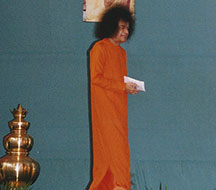
Significance behind Vishnu's insignia
00:01:36Swami tells a small instance from the daily life on the occasion of Guru poornima. One is deluded very often leading one to ignorance. Lord Vishnu is depicted with all the insignia like the mace, conch, the chakra, disc-like weapon and the lotus. What is the inner significance of such depiction? “Conch shell” signifies the sound which is in the hands of the Lord. “Sabdabrahmamayi, characharamayi, Jyothirmayi, vangmayi, nityaanandamayi, paratparamayi, maaya mayi, chinmayi!”— God is the sound, the movable and the immovable, the light, the speech, the eternal bliss, the supreme, is the one of delusion and is the eternal bliss. ‘Sabdabrahmayi’- the sound is depicted by the conch shell. ‘Chakra’ the wheel, depicts the ‘wheel of time’ which is in the hands of God. This wheel of time is called as ‘Kala chakra’. ‘Gadha’, the mace, depicts the strength. ‘Padma’ the lotus, signifies the heart. Hence every heart is in the hands of the Lord. Therefore sound, time and strength are all in the hands of the Lord. This is the inner meaning in depicting the Lord Vishnu with the lotus, wheel, mace and the conch shell.
-
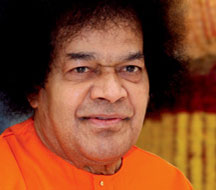
Everything is Brahman in this creation
00:02:35All are children of God, parts of the divine, the manifestation of divinity. Hence it is said in Geetha, “mamaivamso jeevaloke jeevabhootahsanatanaha”- all are the sparks of the divine and the eternal. “Chukkalanniyu brahma, sooryundu adi brahma, Chandrudannanu brahma, jalamu brahma, Swargamannanu brahma, vaikuntamadi brahma Talli annanu brahma, tandri brahma Bhagyamannanu brahma, yogyatwamadi brahma, Jeevaraasulu brahma, jeevi brahma! Puttinchutadi brahma, poshinchutadi brahma Gittunchunadi brahma, gruhini brahma Karmalanniyu brahma, kaayambu brahma, Prakruthi anthayu brahma, praanambu adi brahma, Sarvamunu brahma, ee sabhayu brahma!!” All the stars, the Sun, the moon, water, heaven, Vaikuntha, the mother, the father, wealth, deservedness, living creatures, the individual, the creation, sustenance, annihilation, the householder, all actions, the body, the nature, the life, the whole universe is Brahman!! This august assembly is Brahman!! All are the forms of Brahma. There is no place without Brahma. Hence the Vedas teach, “Sarvatah Pani Paadau”, God is everywhere. The scientists confirm this fact by saying that there is atomic energy everywhere. There is no place without the atomic energy. The Vedanta depicted this as, “Anoraneeyan mahato maheeyan” God is present as in the smallest of the small and the biggest of the big. So God is everywhere. Just as this universe is filled with atomic energy, so also the whole cosmos is filled with God. Embodiments of Love! Therefore one need not worry about anything. One only has to contemplate on the Lord for there is nothing more important than that. It will give everything that one needs and makes one merge with the Brahman ultimately.
-

One can understand Divine Principle by following intellect and by giving up mind
00:07:30Some might think that Brahman can be achieved through some Sadhanas or spiritual endeavours, but Brahman is beyond such Sadhanas. One can know and understand the Brahman only through the path of enquiry. One must discriminate and enquire. The word ‘enquire’ is not proper term for Brahman for, ‘enquiry’ is used for things that are non-existent. Why does one need to enquire about the one that is present everywhere? One need not enquire about Brahman for it is in, around, above and below- everywhere. It is mere ignorance to enquire about such a thing. All the spiritual practices are undertaken for the satisfaction of the mind. The mind is like a lotus flower. In it is the one that is called as “MadhuKara”, the bee, that which sucks the honey from the lotus. What sustains the lotus? It is the bee that sustains the lotus. How can this be understood? The word can be understood by splitting it into two parts viz. ‘Madhu’ and ‘Kara’. ‘Madhu’ means water and ‘Kara’ means the sunlight. The lotus stays alive due to the sunlight, ‘Kara’ above and the water, ‘Madhu’ below. These two make the lotus bloom. There are many delusions entering the mind which can be likened to the ‘bhramara’ the bees. The word “bhramara” with reference to the mind means ‘bhrama’ delusions or desires. It is these desires that are the root cause for the pleasure and pain. One should not be carried away by the desires of the mind. Following the mind will lead to illusion. “Manasu aadharamugagaonna maanavudu Bhramalakante heenamai brathuku chedunu, Budhdhini aadharamuga gonna budhajanundu, Madhuvuniga maarunu mahiniyendu!!” The one goes by the vagaries of the mind wastes life worst than that of a bee, The wise who acts based on the intellect becomes truly the divine on the earth. One must rely on the intellect but not the mind. Mind is a bundle of thoughts and counter thoughts. It does not have a form. There is this cloth. It is not a cloth but bundle of threads. It is not thread but cotton – when one enquires in this fashion one sees through the delusion. Students must understand a simple thing clearly. “Naa dehamu” (my body), “naa manasu” (my mind), -what do the statements mean? When one properly ponders on ‘naa deham’, one thinks it to mean ‘my body’ and ‘naa manasu’ my mind – it does not convey proper meaning. ‘Naa’ means not, ‘deham’ means body so ‘naa deham’ means ‘i am not the body’. “Naa manasu” means “I am not the mind”. In this way when one enquires thus in the Vedantic way one will realise-- “I am not the body, I am not the mind, I am not the senses but I am I!” The statement in Vedanta, “Aham Brahmasmi” is a worldly interpretation but not the actual divine principle. Based on the nature of the world, the four Vedas declare the four great sayings: “Aham Brahmasmi, Pragnyanam Brahma, Ayamatma Brahma, tat twam Asi”. The entire Veda is dualism. Where can one find ‘adwaitha’, non-dualism, when the Vedas themselves are ‘dwaitha’, dualism? Vedas were formed to guide man to choose the right wants, right experiences, and the right path to happiness. The Vedas also set the code of conduct for the different stages of life viz. ‘brahmachari’ the celibate, ‘gruhastha’ the householder, ‘vaanaprastha’ the old age , ‘sanyasi’ the recluse. Vedas teaches the code of conduct but is dualism. Vedanta is adwaitha, non-dualism which is the Upanishad. The Vedanta too negates the dualism. In the statement, ‘Aham Brahmasmi’, I am Brahma, there are two entities ‘I” and “Brahma’. When there are two entities it amounts to dualism and not to non- dualism. In this way one can understand that divinity is everywhere.
-

What is Brahma Tattwa and Maya Tattwa: With Analogies
00:06:29Lord Rama at one time was pretending to learn the 'Brahma tatwa', the principle of divinity from the Sage Vashishta. Parvathi and Parameshwara are not separate entities. Parvathi is steadfastness and Eshwara stands for faith. Therefore, Parvathi and Parameshwara are the embodiments of steadfastness and faith. Every man has the steadfastness and faith. Hence every man is essentially “Arthanarishwara”, androgynous. In a similar way illusion and divinity are present in every man. When one enquires about the nature of the illusion and divinity that is present in the same individual, one has to consider the five aspects viz., “Sath”, the being, “Chith” the awareness, “Ananda”, the bliss, “Roopa”, the form and “Nama” the name. The ‘Sath, Chith, Ananda” are the attributes of the Brahman. The “roopa” and “nama” are the attributes of illusion which are only apparent but not real in content. What propels and what is required for the waters of the ocean to form waves? Waves are made by the air acting on the waters of the ocean. Without air, the water does not form waves. Therefore due to the power of the air, water changes into a wave. Similarly it is due to the power of illusion that the wave called beings emanate from the ocean of ‘Sath, Chith, Ananda’, the Brahman. The air that makes the waves emanate from the ocean is the “Maya”, the illusion, the wave is the individual and the ocean is the ‘Sath, Chith, Ananda’. Therefore the individual emanating from the ocean of ‘Sath, Chith, Ananda’ is essentially ‘Sath, Chith, Ananda’. When once this truth is realised, then “Brahmavid brahmaiva bhavathi” the knower of the Brahman becomes the Brahman!! Today, based on the differences in the vestures, man believes in the many names and forms and experiences the many thoughts. The sath, chith, ananda form, the Brahman, is always accompanied by the illusion. However the illusion fades away gradually. The waves get annihilated at the hands of the one that was the cause for its formation. That which is born is bound to die but it is the quality of the vesture to be born and to die. That which is born but never dies is the Brahman. That is the reason why Brahman is described as “Bruhat swaroopa” meaning the one who pervades all and who is omnipresent. Hence there is nothing in this world which is not “Brahman”!! The whole world is the manifestation of Brahman! It is due to the limited intellectual faculties, that man is unable to realise the vastness of Brahman. Just like the creation of illusion of snake in the rope, so also man creates the beings in Brahman and is subjected to sorrow. Hence every one is the manifestation of Brahman. Men should not fragment themselves or consider them low and human, based on the different vestures. Fragmentation and segmentation is a sign of ignorance. Not realising the truth is ignorance and realising the truth is wisdom. The wisdom and ignorance cannot be obtained by reading the texts or books. Hence, “Sarvam gnyaanamayam”, everything is wisdom; the whole world, the individual and the society is full of wisdom. That wisdom is the embodiment of the Brahman, the eternal truth. Therefore “Sathyam gyanam anantham brahma” God is the eternal truth and endless wisdom!!
-

What is the relationship between Paramardhika, Vyavaharika and Prathibhasika
00:04:35What is the relationship between “Paramardhika”- relating to the supreme truth, “vyavaharikam”- relating to common life, and “pratibhasikam”- existing only in appearance? Paramardhika is like a great ocean, out of which come the waves of “vyavahaarika”. The waves too have the form and taste of the ocean and those are retained by the waves without change. The waves too have salt, have the coolness and also have the white foam. The salinity, the coolness and the whiteness of the ocean are also present in the waves. Similarly the spiritual quality too has not changed in the worldly aspects. Next is the ‘pratibhasika’. It is the foam present in the ocean waves. The characteristics of ocean are present in pratibhasika too! It is most essential that one knows the relationship between these three namely Paramardhika, vyavaharikam and pratibhasikam and conducts oneself accordingly. Without ocean there are no waves. Without the waves there is no foam. Therefore without paramardhika, the spiritual content, there are no waves of vyavahaarika, the worldly ritual and without the waves of vyavahaarika there is no foam of pratibhasika. Therefore the foam of pratibhasika is based on the waves of vyavahaarika. Similarly the waves of vyavahaarika are based on the ocean of ‘paramarthika’. Hence, the ocean is the grandfather, Paramardhika is the son, and pratibhasikam is the grandson and so all the three are the legal heirs to the same property. That is the nature of the ocean. The ocean does not bulge or increase on the merging of the rivers. It may transform into vapour under the influence of the sun but it never dries up. It is the quality of the ocean to neither get elated nor get depressed. It implies that the ocean has no trace of ego or possessiveness. But man looks upon these three aspects namely Paramardhika”, “vyavaharikam” and “pratibhasikam” as different aspects. It is not true. One should not separate the spirituality from the worldly for then alone can one get peace in the worldly vocations. What is the reason behind the misery in the world? The reason for the misery is that man has forgotten the spirituality and goes by the worldly activity. The worldly affairs are like the castles in the air; like the passing clouds. Man believes the transient world to be true and permanent and neglects the eternal and everlasting spiritual aspect. Therefore spirituality should never be forgotten.
-
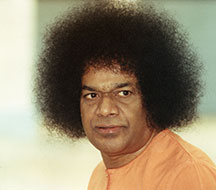
Every ritual should carry the spiritual aspect
00:01:13People have been singing bhajans throughout the past night. It is a worldly ritual. How does one get the rituals? The rituals are based on the spiritual aspects. Therefore, every worldly action is based on spirituality. All sorts of vocations like job, business, education etc are based on the spiritual aspects. Any activity based on spiritual aspects, though pertaining to the world, becomes spiritual in nature. Out of the worldly comes the ‘pratibhasika,’ the existence only in appearance.
-
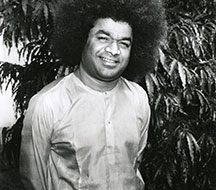
We need to develop the quality of sacrifice, love for the country and contemplate upon spiritual truths
00:02:19Swami wishes that we put aside the differences of caste and religion and make an effort to realise that God is one and the same and live amicably like brothers and sisters and uphold the brotherhood of man and fatherhood of God. The three aspects namely the spirit of sacrifice, patriotism and spirituality has been in the blood of the citizens of this country from time immemorial and that needs to be revived in the form of actions. Good faith, good conduct and pure love are essential for man. The qualities of jealousy, ego and selfishness are great enemies of man and true devotion would shove away the bad qualities to give room for thoughts of God and pure love in one’s heart.
-

Who am I; Question yourself
00:01:56First of all, one must make every effort to know one self. One wastes time in responding to questions like ‘who are you?’ One must put the question, ‘who am I?’ to oneself and must try to look at one’s self. How should one try to look at one’s self? There is a lot of agitation all over the world. The entire environment is making one suffer. What do people who go to a hill station do? They wear an inner-wear inside, on that they wear a shirt and up on that they wear a woollen coat to bear the cold. However, when they return to their native place, they remove the outer woollen coat, then the shirt and last the inner wear and are able to see their chest clearly. The outer coat resembles the beastly temperament or the ‘tamo guna’. The shirt resembles the pious aspect or the ‘Sathwa guna’, the inner-wear is the emotional aspect or the ‘rajasic guna’. When all the three aspects are removed the ‘Atma’ or the self becomes visible. As long as these three attributes are present, one cannot gain the wisdom of the self or the ‘Atma gnana’. Therefore, to reach that state of sacredness one must gradually reduce the three aspects.
-

How to make use of our will power
00:01:52‘Name’ is negative, ‘service’ is positive; the current flows when both the negative and the positive are there. The ‘current’ is one’s will power. One must make proper use of this will power. How can one utilise his will power properly? Bhagawan says one can attain peace by following the human values of ‘Sathya, (truthfulness)’, ‘dharma (righteousness)’, ‘shanthi (peace)’ and ‘prema (love)’. As there are new comers here, these things have to be repeated. Here one can find the bulb glowing and giving light. What is the basis for the light? It is the bulb. What is the basis for the current to flow to the bulb? It is the wire. Can one get the bulb to glow by merely having a wire? There should be the current passing through it. When the current of ‘Sathya (truthfulness)’, passes through the wire of ‘dharma (righteousness)’, reaches the bulb of ‘shanthi (peace)’, then one gets the light of ‘prema (love)’! That is the love. To have this light of love, one should have the bulb of peace. The bulb of peace must be connected to the wire of righteousness. The current of truth should flow through this wire. Therefore, the human values of ‘Sathya, (truthfulness)’, ‘Dharma (righteousness)’, ‘Shanthi (peace)’ and ‘Prema (love)’ give light to one’s life.
-

Form is transient, name is eternal
00:03:34In this world mud or clay is in one form. The clay is one but the forms that it can be moulded into are many. Likewise gold is one but the ornaments made out of it are in many forms. So also Atma is one but the forms of the individual are many. Milk is one but the cows are many. In the world one cannot see beyond the name and the form as it is made up of forms and names. One form, one name; out of the two, name and the form, it is the form that changes continuously and is something that withers away and finally disappears altogether. Though the form disappears, though the form undergoes changes, the name remains the same, changeless. An example here: the form of a cow could perish with the passage of time, but the name given to it, ‘the cow’ remains forever. In the same manner forms may disappear but the names given to the forms last forever. So when one takes the name as the basis, one can easily get the named entity. It is a difficult task to identify a person in a group based on certain traits but an individual responds to his name even amidst a crore of people. So with name it is quite easy to identify a person even amidst a large gathering. In the same manner, when one takes His name as the basis can easily get to the Lord. One can travel and reach the station once one knows the name of the station. How can one undertake the journey without knowing the name of the destination? Hence, name is of paramount importance than the form.
-
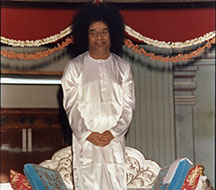
Everyone can transform their Samskaras
00:07:52When one concludes that all the matter in the world undergoes change from either good to bad or vice versa, one finds that there are certain objects that are contrary to one’s conclusion. There is yet another example to illustrate this. Gold is mined out of earth in its primitive form. The gold ore thus obtained does not have much value. This gold ore is subjected to many processes to remove the latent impurities and the gold that is bereft of its impurities is highly valued. When one concludes that all things occurring naturally are good then the gold that is got naturally from the earth is valued less when compared to the purified gold. What is the reason behind this? Materials occurring naturally with latent impurities lose their impurities after being subject to certain processes and treatments; this also a feature of nature. Likewise taking birth, eating, drinking, walking etc can be considered as natural traits in an individual. There are instances where man who is born with such basic worldly features has attained sacred heights by subjecting himself to certain practices to remove the latent impurities. Thus there are certain practices to attain this equanimity. A good example to illustrate the above concept is the watch that is worn daily. There is a watch worth rupees two hundred on one’s wrist. What is it that is priced at rupees two hundred- is it the nuts and bolts inside the watch or the metal that the watch is made up of? When the two hundred rupees worth watch is put in fire, the metal that emerges is not worth a penny. But a skilful work man, who understands the knowhow of making of a watch, uses the worthless metal to build a watch that keeps perfect time; this is called as ‘Samskara’ the process of making a worthless object into a valuable one after subjecting it to certain changes. It is this expertise of the skilful work man that is priced at rupees two hundred. It is the process that changed the worthless metal into a working and time keeping watch, which is valued at two hundred rupees. Similarly, a man who is born ignorant, can become a ‘Paramahamsa’ the realised soul, by undergoing certain processes like visiting the wise and the pious , speaking to the learned etc. One uses a valuable watch in such way as to derive full utility out of it; similarly one needs to use one’s discrimination to make proper use of the sacred human qualities acquired.
-
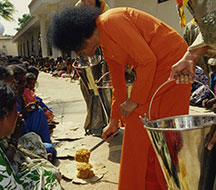
Difference between waking and dream state
00:01:38There is a considerable difference in the experiences that a man under goes in the wakeful state and in the dream state. What is the basis for the experiences in the dream state and for the dreams itself? When one enquires so, it can be concluded that sleep is the cause behind the dreams. Without sleep one cannot get dreams. People sleeping in the illusionary sleep get dreams related to the illusionary world; but the people with steady mind do not have the illusionary sleep and so enjoy the oneness with the divine.
-

Understand your Body, Mind and Intelligence
00:03:33According to the words of poet Vemana, it does not matter even if you go to the world of Indra or to the land of the moon. You should try to get on the Nandi and see the Divine and understand the self. Ordinarily, the word Nandi means “bull”. But Vemana has used this word Nandi synonymously with Buddhi or intelligence. He means that if we make ourselves distant from our intellect and go to the moon, the happiness that we get will not be the right kind of happiness. The right kind of happiness is contained in our own mind and within our own thoughts. Without making proper use of our intelligence, without developing detachment to our body and without having faith in the Divine, we are not going to have the fruits of our actions. If you keep away from cleansing your mind, and if you stick to sensuous pleasures, you will never have the fruit of your actions, even if you go on praying to God for His blessings.
-

Swami on waking, dreaming and deep states
00:04:52During the day, while he is awake, man gets involved with his mind, body, intellect and other organs and he establishes a relationship with material environment and enjoys the situation. During the night while he is dreaming, his body does not participate in any activity, his eyes are closed and he does not see anything with his eyes. In spite of this, he feels that he is going through different situations. While he is moving in many different places and participating in many different events in his dream, he is not able to find out which part of his body is truly participating in all those things. There appears to be no connection between the body that functions in the waking state and the body that functions in the dreaming state. Who or which of these two is the real body? On the other hand, while he is in deep sleep, he does not have experience of any kind, but when he gets up, he says that he has had a sound and refreshing sleep. Is he able to state and identify who it was that had a sound and refreshing sleep? Can he even identify which part of his body enjoyed that sound sleep? If one who, completely forgetting the environment, sleeps well and wakes up and says, “I have enjoyed a good sleep”, we have to ask the question, “Who is this ‘I’ who enjoyed a good sleep?” Thus in the waking, dreaming and deepsleep states, there is a self who has been present. This self is something different from the body and has been present witnessing all the states. It is wrong to think that this self is the same as the body. The body and the self are quite different.
Topics
- Analogies
- Atma
- Attachment
- Balvikas
- Bhaja Govindam
- Bhajans
- Body
- Character
- Company
- Compassion
- Culture
- Day to day
- Desire
- Devotees
- Devotion
- Dharma
- Discipline
- Discrimination
- Doctors
- Education
- Faith
- Festivals
- Forbearance
- Gayathri
- God
- Gratitude
- Guru
- Health and healthcare
- HIS Life
- Human values
- India
- Karma
- Love
- Mahabharata
- Man
- Meditation
- Mind
- Music
- Musicians
- Namasmarana
- Nature
- Parents
- Pleasure and Pain
- Practice
- Ramayana
- Religion
- Sacrifice
- Sadhana
- Sai Organization
- Saints
- Sathya
- Science
- Senses
- Service
- Sevadal
- Shanthi
- Shirdi Baba
- Society
- Spirituality
- Students
- Thoughts
- Time
- Unity
- Upanishad
- Vedas
- Vices
- Yoga
- Youth
